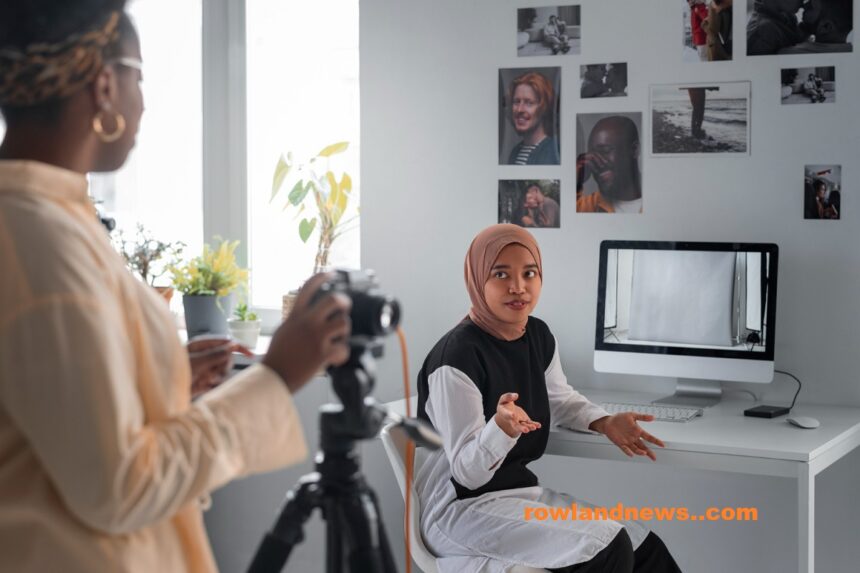But certainly there must be a way to convey complex psychological concepts to a Cambodian audience.
You aren’t the only one thinking about this. Cambodians are increasingly interested in mental health and psychology. It’s never been more important than now to have good quality, locally produced educational material in Khmer to start with. This guide details the entire procedure for producing educational videos about psychology, designed to satisfy viewers whose top priority is Khmer and share useful tips on how you can make it both fun and profitable.
Why Psychology Education in Khmer Matters
The lottery of life is not fair. Patience is patient, good things will come; anger only ruins everything! Clarify naturally. For some Cambodians, especially those living in non-urban locales where physical isolation makes obtaining reliable psychological information in their native tongue next near impossible, that’s exactly the way it goes.
There are plenty of resources in English, but not all translate well into Khmer–literally or culturally. And that is why producing psychology videos in the Khmer version can be so powerful. Perhaps likewise it is also an absolute necessity if we want to reach more people and have a greater impact on their lives. As soon as this work is more narrowly focused on how psychology itself can be made accessible or useful to ordinary people living somewhere else around Phnom Penh than Cambridge University-educated expatriates from Los Angeles being run against themselves with some input by local
🧠 Step One: Choose a Subject That Counts
The first step is deciding what psychological concept you want to cover. This might be anything from general topics like mental health promotion techniques or more specific ones such as:
- How to manage stress and anxiety
- The psychology of parenting and child behavior
- Understanding depression and how to seek help
- Trauma and healing in a post-conflict society
- Building self-esteem and confidence
Tip: Pick topics people are asking questions about. You can find these in Facebook groups, on Khmer forums, and even by asking your local educators and students. However you get the data, connect with what people want to know now!
Step 2: Carry out Your Research—From International Understanding to Local Realities
To make trusty videos, you will need authoritative content based on solid research. So much more so it really needs to be something that in and for Cambodian culture, society can recognize.
Match global knowledge with local sensibilities:
- Depend on authoritative global sources such as the American Psychological Association (APA) and World Health Organization (WHO)
- Inject Khmer content—traditional custom, family make-up and common social issues
Example: If you are talking about PTSD, you might add in statistics for Cambodian genocide survivors and viewpoints from mental health NGOs like Transcultural Psychosocial Organization Cambodia (TPO)
✍️ Step 3: Write a Simple, Clear Script in Khmer
Once you have completed your research, and before you start recording any material, it is time to write a script in Khmer. Keep in mind that your listeners may not be familiar with difficult words or technical terms found only in scientific journals, so do not think ablaut eazyyour language simple.
Best practices for writing your script:
- Use everyday terms in Khmer and do not rely on too many words borrowed from English.
- Use analogies or brief parables to explain complex topics. For example, compare the brain to a leader fruit (the body) for understanding executive function.
- Keep it as if you are having a chat, like chatting with friends or answering a smart high school student.
- You can also throw in a few key psychology terms in English (with explanation).
Step 4: Plot Your Visuals and Format
Instructional videos can be however simple, but never dreadfully not interesting. Now is how to achieve the balance. And you have a bewildering array of formats to choose from.
The above is the most popular type for psychology videos questioning Khmer’s viewers:
- Whiteboard animation – Ideal for setting up theories or explaining “how to’s”
- Talking-head video – Where the presenter talks directly to the camera
- Role-play scenes – Act out the scenarios (e.g., a counselling session)
- Slide presentations with voice-over – Simple and effective, particularly for viewers at school
The Tools You Can Use:
- Canva or PowerPoint for a slide show
- OBS Studio for recording
- CapCut or InShot for editing (can be used on mobile phones)
- Audacity to clear audio recordings
Pro tip: Make sure the things in your visuals match what you are saying. If you’re saying stress, for Cambodians to relate to you also need to film scenes of stress.
Step 5: Recording and Editing with Attention to Quality
Good audio and video does not require a studio, although clarity is non-negotiable.
Audio:
- Use a basic lapel or USB mike
- Find a quiet place—turn off whatever fans, close the windows
- Speak clearly and naturally
Video:
- Use your smartphone or DSLR camera, along with good lighting
- Record in front of a clean, uncluttered background
- Wear professional dress, or appropriate to the subject matter
After the recording, utilize editing software to polish off mistakes that have been made, put in captions or subtitles, and add an attractive chart or key concepts in Khmer
📣 Step 6: Smart Distribution: Reaching the Audience that Matters
You’ve made your video, now it’s time to launch.
Platforms worth considering:
- Facebook – Still the most popular social platform in Cambodia
- YouTube – Great for long-form and searchability
- Telegram Channels – Especially popular among students and educators
- TikTok – For short, digestible mental health tips
In addition, you can work with local NGOs, schools, or university pages to disseminate your content.
Include Khmer and English hashtags like:
- #បុណ្យអ៊ីជចេីនបុណ្យអ៊ីឩ (#PsychologyKnowledge)
- #MentalHealthKhmer
- #សុខភាពផ្លូវចិត្ត
A Real Example: A Psychology Student Turned Content Creator
Sokha, a graduate of psychology from Royal U Phnom Penh, started a YouTube channel in 2023 specialising in Khmer-language videos about emotions and relationships. Her clip on how to deal with anger constructively has been seen over 20,000 times. She brings lifelike examples, animated visuals, and a calm, clear voice to every tape.
Sokha proves that it is not fancy equipment you need—just real information presented with utility in Khmer text.
Conclusion: Psychology Videos in Khmer Can Make a Real Difference
Making instructional videos about psychology in Khmer is not just education but a way of turning knowledge into tools for good mental health. You can join in–and everyone’s voice counts–if you are a student or teacher, NGO worker, or just curious learner aiming to make this a happier Cambodia.
You don’t have to be perfect in everything you do. As long as you start small, speak clearly and keep it up.
✅ Share and Teach Psychology to Cambodia
If you’ve ever wanted to use your learning to give back, there is no time like the present. Awareness of mental health is on the rise –and videos in Khmer are needed it.
👉 Start planning your first video now. Who knows? Your words could change someone’s life for good.












